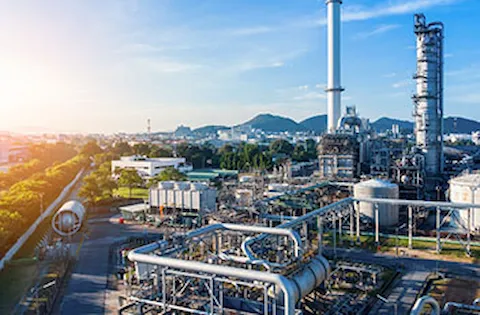

Carbon dioxide (CO2) plays a significant role in global warming. Effective management and reduction of CO2 emissions are essential for mitigating climate change impacts. This has led to significant interest in projects involving large-scale handling and transport of CO2 in the segment of sustainable energy and Carbon Capture, Utilization, and Storage (CCUS).
The safe handling of CO2 is crucial to prevent potential hazards such as asphyxiation or high-pressure incidents, necessitating a comprehensive understanding of its properties for environmental and industrial safety. This article explores DNV’s involvement in the energy transition, specifically in CO2 modelling.
Understanding CO2 phases and modelling
Depending on operating conditions, CO2 may exist in vapour, liquid, “dense phase” (usually referring to conditions above the critical pressure but below the critical temperature), or super-critical phase. Unlike many other hazardous fluids, the solid phase of CO2 is relevant in consequence modelling because at atmospheric pressure, CO2 is always either solid or vapour. As illustrated by the phase diagram, depressurization below the triple-point can lead to solid effects, which are important when modelling CO2 releases.
Consequence modelling of CO2 releases
Consequence modelling involving CO2 releases requires the ability to handle a range of fluid states and phase transitions that may occur during an accidental release. This affects modelling from discharge through to dispersion.
Our consequence modelling tool, Phast™, and risk modelling tool, Safeti™, are equipped to model CO2 across a range of conditions. Significant improvements over recent years have led to better handling of solid-vapour equilibrium calculations and solid properties. Current work aims to improve simulation of CO2 releases from long pipelines, particularly the rapid initial depressurization from initial conditions above the saturation pressure.
Dispersion modelling of CO2 releases
Dispersion modelling of the CO2 discharged following an accidental release is required to predict hazard distances and potential toxicity risks. In addition to correctly representing the fluid state, it must appropriately represent the initial release geometry and nature of the flow. We have performed rigorous validation of Phast and Safeti models against experimental data, including large-scale experiments from joint-industry projects (JIPs) such as CO2PIPETRANS and COSHER. These experiments range from small-bore horizontal releases to buried CO2 pipelines that produce a crater from which the flow emerges. Phast and Safeti validate well across this range of experiments. In particular, the new gas blanket model introduced in version 8.9 better represents the observed ground level flow following buried pipeline ruptures in low-wind conditions.
Guidance document for CO2 modelling
To support best practice in CO2 handling, we have released a guidance document for CO2 modelling, available in our Knowledge Centre (login required). This document provides insights into the unique properties of CO2 and the impact on safety. It also provides more information regarding best practice on the handling of CO2 modelling in Phast and Safeti, validation against experiments and recommendations for modelling choices when using CO2.
Ensuring effective CO2 modelling and safety
In conclusion, as the significance of CO2 in the energy transition and in environmental management continues to rise, understanding its properties and modelling behaviour becomes essential. Our software suite offers reliable CO2 modelling across a wide range of operating conditions. The Phast and Safeti CO2 guidance document should enable professionals to understand the key issues and effectively model CO2 in consequence and risk assessment and safety planning.
Explore our software solutions:
Discover applications of our software
Hydrogen consequence and risk modelling
Guidance on modelling hydrogen releases using Phast and Safeti software.
Accident & incident investigation
Assess hazardous material releases, identify root causes, and develop preventive measures using the Phast software.
Consequence estimation
Perform comprehensive consequence analysis and visualization for safety studies such as HAZOP, HAZID, PHA, and LOPA using the Phast software.
Regulatory compliance
Evaluate and manage consequence and risks associated with hazardous materials and operations for regulatory compliance using the Phast and Safeti software.
Emergency response
Simulate consequences from loss of containment scenarios to aid in the development of effective emergency response plans using the Phast software.
Facility siting & occupied buildings risk assessments
Support operators in conducting Occupied Buildings Risk Assessments (OBRA) for major hazard installations using the Safeti software.

